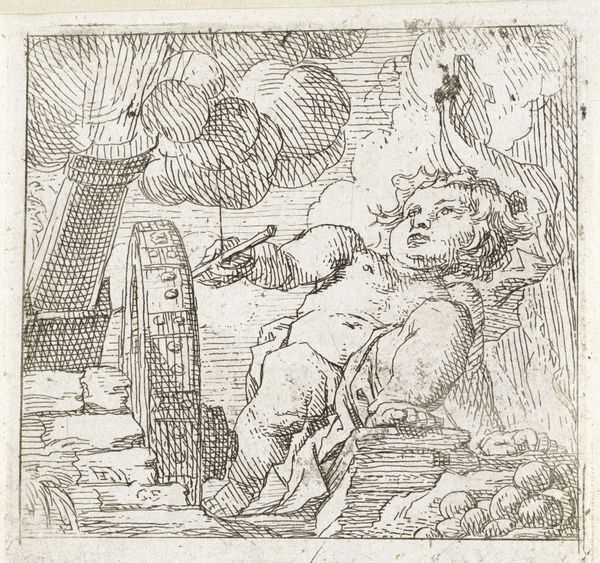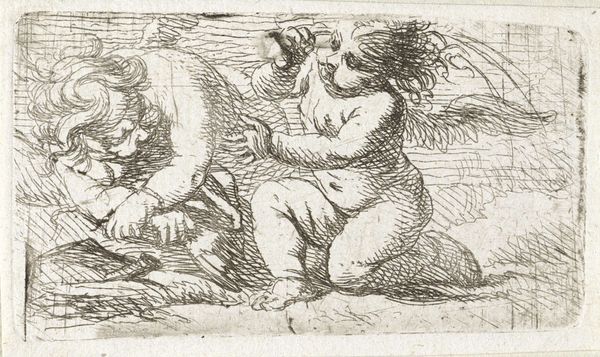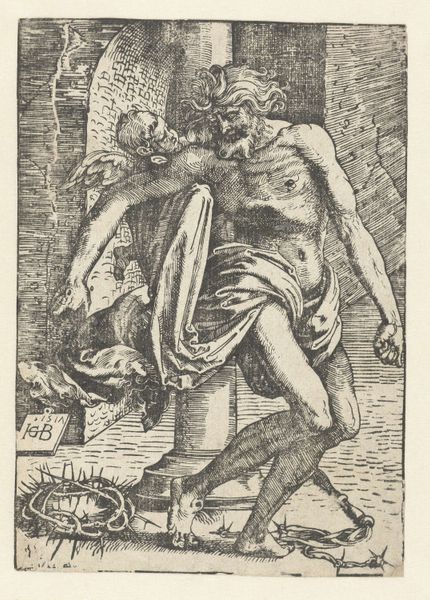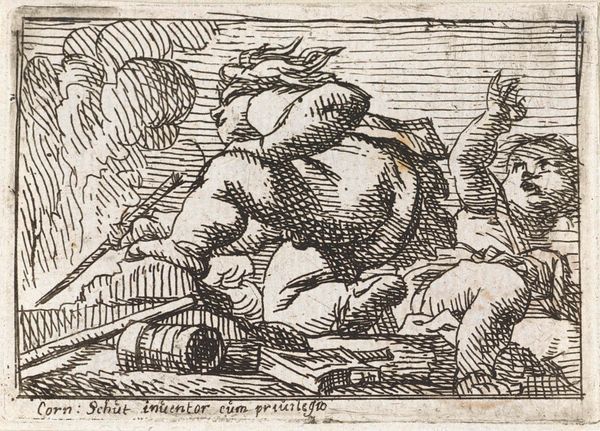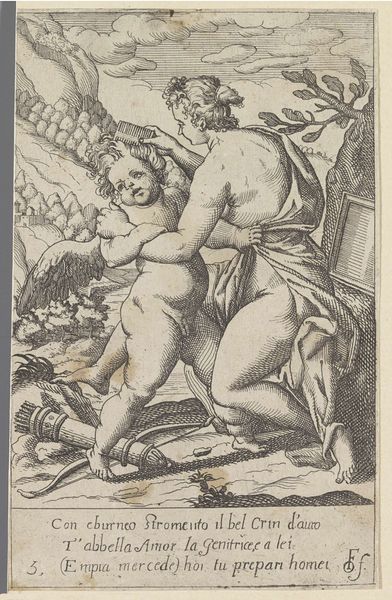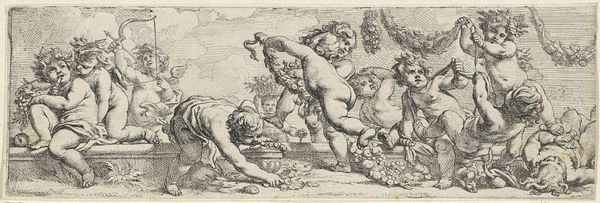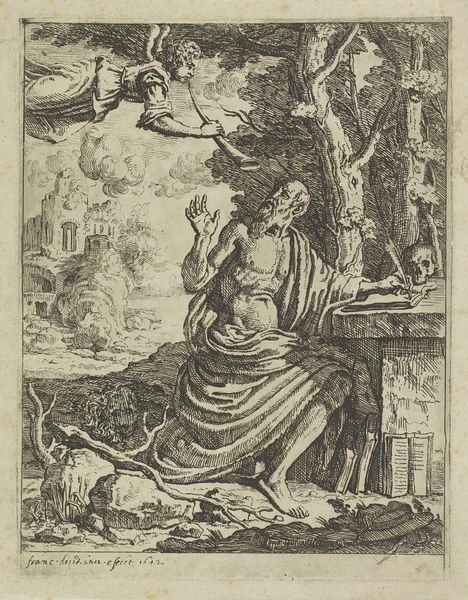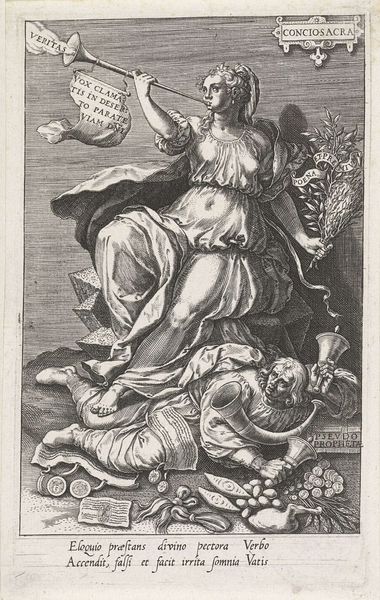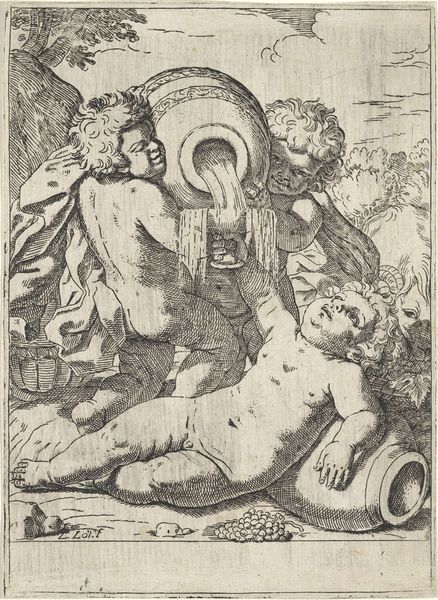
print, etching
#
allegory
#
baroque
# print
#
etching
#
figuration
Dimensions: height 55 mm, width 97 mm
Copyright: Rijks Museum: Open Domain
Curator: This etching, simply titled "Putto schiet kanonskogels af" or "Putto Shooting Cannonballs" in English, comes to us from the period of 1618 to 1705. Though its creator remains anonymous, it resides here at the Rijksmuseum. Editor: Well, the first thing that strikes me is this is grim! The subject matter feels… wrong? It is so clearly hand-wrought—etched, precise—which is at odds with a depiction of violence perpetrated by a child-like figure. Curator: Indeed. The cherubic figure, often associated with love or innocence, is here placed amidst a scene of destruction. It plays with the traditional allegorical function of putti. Here, we’re invited to question, perhaps even critique, the glorification of warfare and the powerful symbolism associated with childhood innocence, turned, unexpectedly, into a weapon. Editor: Absolutely, I immediately zoom in on how this Baroque print highlights the sheer labor. Look at the tiny repeated lines forming the smoke and shading that build the forms. It is an indictment of labor mobilized in the service of war, really. This artisan using an etching needle becomes complicit by giving aesthetic shape to devastation. What commentary does that imply? Curator: Precisely. We might ask what happens to the very idea of ‘innocence’ during times of conflict. How does a culture process the loss of innocence on a grand scale? This Baroque piece perhaps offers a visual symbol for that profound cultural shift. The grapes are also notable—bacchic emblems repurposed to stand for the spoils of war. Editor: Right. I mean, the grapes signal earthly pleasures made monstrous by the scale of weaponry. The cannon, the fire – even this cherubic figure's body is reconfigured as another element of a war machine! I’m very aware of the process—the creation of this plate—and then the many subsequent applications of it, spreading this allegory even further. Curator: The dissemination of this image would have spread a powerful message. It seems its purpose lies not just in aesthetics, but in prompting crucial reflection, disrupting simple acceptance of dominant narratives of war. Editor: It reminds me that even the humblest of crafts can amplify troubling ideas, but can equally arm us with tools to consider how a culture embraces or resists state violence.
Comments
No comments
Be the first to comment and join the conversation on the ultimate creative platform.
